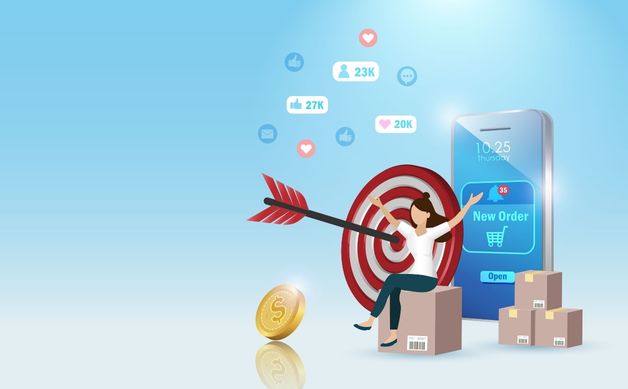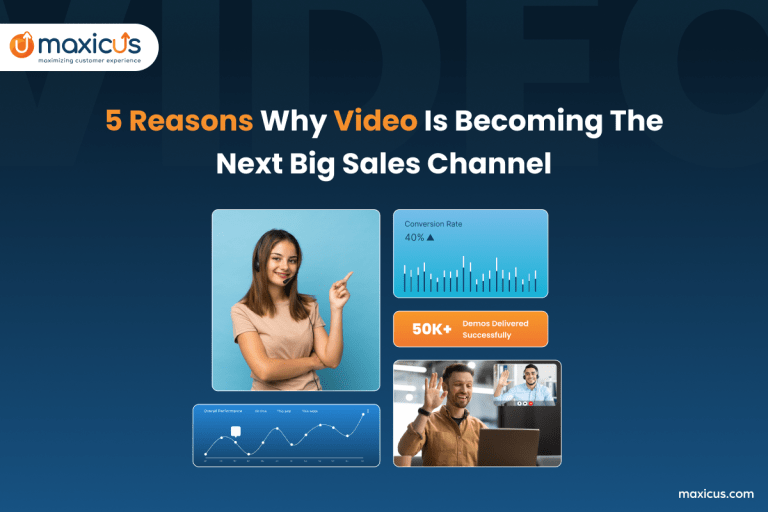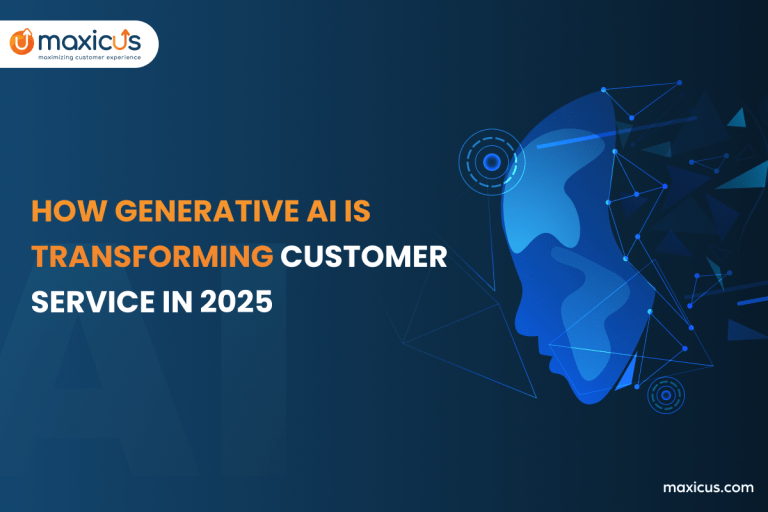9 eCommerce lead generation strategies that will boost your sales pipeline
E-commerce lead generation is vital for the success of every online business. Without gaining and nurturing leads, your business will simply fail to grow! Fortunately, there are many lead-generation strategies that online merchants can use. Let’s start from scratch.
In eCommerce lead generation strategies, a lead is someone that shows an interest in your products or services. E-commerce leads show interest by taking specific actions, like clicking your ad, following your brand on social media, or joining your email newsletter, etc.
Every business is different, which is why lead generation for eCommerce varies. Your definition of a perfect eCommerce lead, for example, will probably differ some from your competitors. What’s important, however, is that you define or determine your dream lead. When thinking about who your ideal lead is, think about the following factors Household income, Age, Education, Gender, Location, Hobbies or interests, Pain points, and more. These details can help your business create a buyer persona or mock-up of your ideal eCommerce lead.
Looking for a reliable and effective way to generate leads for your e-commerce business?
Identifying different stages of lead generation in eCommerce
The strategies used to generate these leads are put in place by your business to ensure that your leads are quality and worth nurturing for the future. Lead generation is a marketing process with the target of generating and capturing consumer interest in the company’s products or services. This interest inspires strangers or visitors to leave their information contact or interact with your business in some way. These contacts and interactions, which are considered leads, are the primary input of the sales pipeline.
Lead generation is all about building trust with your audience and educating them about your industry and offerings along the way.
Understanding the different steps to eCommerce lead generation:
Step 1.
A user somehow finds your business through your activities on marketing channels, such as websites, blogs, social media pages, recommendations, community comments.
Step 2.
The user then clicks on your call-to-action some images, buttons, or messages that motivate the users to take specific actions: subscribe to emails, register an account, get free documents, etc.
Step 3.
The CTAs will direct your visitor to a web page that is created to fill out lead information in exchange for your offer.
Step 4.
Your visitor inserts your form to get the offer (these forms are usually hosted on landing pages). And congratulations! You had a new lead, with information to take action on.
When visitors complete the form and provide their information to you, the visitors become leads. The entire lead generation process should be under scrutiny by your team to ensure that it is as effective as possible in bringing in new leads, nurturing them, converting them into customers, and retaining those customers over time.
Many leads drop off before they are passed to sales because there was an interest in your company but it did not develop enough to move from an interest to a desire. These warm leads can be recaptured, but this costs more time, money, and effort from the marketing team, which is why it’s important not to lose them in the first place.
What is the purpose of eCommerce lead generation?
The purpose of eCommerce lead generation is to reach out to potential buyers and create awareness about your products or services to convert them into buyers and, hopefully, repeat customers.
Many businesses today are heavily dependent on Lead Generation as it generates traffic to their websites where they can convert leads into customers. Google has made the process of connecting people to businesses easier, ensuring that businesses can let the world know how different their products and services are from their competitors.
It allows you to target a customer base who is actively searching for your product or service via a search engine. And by taking the lead directly to your website it increases the chance of the lead purchasing from your business.
Having a more engaging website, it grabs the attention of a potential customer who is looking for something specific. It ensures that your business stands out from the competition and increases the chances of your conversion. The potential customer is more likely to give an engaging website with their contact details than a boring website that has no engagement.
It can also allow the sales and marketing departments within a business to build a productive relationship. These departments will need to work together to implement an effective lead-generation strategy.
Lead generation is a marketing method centered on attracting prospective customers to build mailing lists and/or provide sales leads. Typically done via telemarketing and trade shows in the past, today lead generation is often performed through digital channels.
With lead generation and conversion being a priority among marketing professionals, the industry explores digital avenues to reach its targets. Social media is highly valued in this regard.
In 2019, digital lead generation advertising spending in the United States is estimated to amount to nearly 2.6 billion U.S. dollars. With steady growth, this figure is forecast to reach 3.2 billion by the end of 2023.
Source: Statista
9 eCommerce lead generation strategies that will work for your business
SEO (Search Engine Optimization)
Consider how your potential customers shop for the products they want online. In most cases, they begin by searching for the items they want on search engines like Google.
With an SEO strategy, you improve your site to help your pages rank in the results of those searches. This makes it easy for your potential customers to find you and allows you to focus your marketing budget on the people who actively search for your products.
Pay-per-click (PPC) advertising for catching the attention
Although SEO is the best long-term strategy for eCommerce lead generation, running pay-per-click (PPC) advertisements on platforms like Google Ads is an effective way to reach searchers while you establish SEO rankings. PPC is also useful for competitive keywords that have clear purchase intent but are dominated by your competitors.
When you create your campaigns, you determine where you want to display your ads based on the keywords users search. If you sell running shoes, for example, you could display an ad in the search results for “women’s trail running shoes.”
Then, you set bids based on how much you’re willing to pay for each click to your website, and you only pay that amount when your ad is clicked.
Content marketing
Many of today’s consumers research the products they want before buying. They want to know which products are the best options for their needs, which offer the best value for their money, and which are the most popular with other customers.
You can provide all of this information and more as part of your content marketing strategy. Publish blog posts, articles, and other content to help your customers make informed purchasing decisions.
The topics you choose depend on your industry and products, but this content can range from buying guides about specific products to blog posts on the latest trends to articles with helpful tips. When you provide information that your eCommerce leads want, you can help them make buying decisions – and build a trustworthy reputation as a helpful resource in the process.
Social media campaigns
Social media is a valuable marketing tool. It’s the perfect channel for interacting with customers and showing your brand’s personality.
Some platforms also offer effective advertising options. On Facebook, for example, you can run ads designed to drive traffic to a specific page on your site and use their highly-specific targeting options to reach the exact audience you want.
These options range from basic demographic information like age, gender, and location to more advanced options like interests, career, education, and past actions on Facebook. When you utilize these targeting options, your ads bring the exact audience you want to your site.
Email marketing
Not all of your site visitors will be ready to buy on their first visit. But many of them will be ready to provide their email addresses in exchange for a discount or some other incentive.
Use email marketing to stay in contact with those eCommerce leads and encourage them to return to your site. You can tell your subscribers about new products, notify them of sales, and share any other information they might find interesting.
You can also use automated campaigns to send specific messages to your subscribers based on the actions they take on your site. If a customer adds a product to their cart but leaves without purchasing it, for example, you can send them an email with a link to return and complete the transaction.
Email support outsourcing: A guide to enhancing your CX
Personalized outreach
Your customers don’t all want the same things, which means that you can’t reach them all with the same marketing messages. With personalized marketing, you can tailor your ads and offers to be as relevant as possible to different customers.
If a visitor has previously visited a specific product page, for example, you can display offers related to that product as soon as they land on your site. The easier you make it for visitors to find what they want, the more likely they’ll be to make a purchase.
Conversion rate optimization (CRO)
When a visitor arrives on your site, you want them to convert in some way. That may mean making a purchase, signing up for an email newsletter, or another action that moves them through your sales funnel.
Conversion rate optimization, or CRO, is the process of testing elements on your site to see which are the most effective in getting your visitors to convert. You can test everything from the layout of your product pages to the calls to action you use and use that information to improve your site for the most possible conversions.
E-commerce lead generation with competitors unhappy customers
Dissatisfied competitors’ customers are everywhere, especially if your competitors are big companies. You should learn to take advantage of it.
There are two different ways how can you approach the unhappy competitor’s customers:
- Through outreach
- By pointing out your advantages over your competitors
If you’re choosing the outreach, first, you must know where to outreach to. Review platforms are a great way to find out who is unhappy with competitors’ services or products. Make a list of them, and craft an amazing outreach email.
If you’re going for the second option, find out the high-density keyword, and write a landing page or blog post article on that keyword.
Using pop-ups on your website for better engagement
Have you ever landed any website that didn’t offer the information you were looking for? As you intended to close the website, it displayed a pop-up that made you stay on the website a little longer.
Web pop-ups help you to display limited sales, discounts, personalized promotions, etc.
Guide to e-commerce customer service outsourcing
Conclusion
Understanding eCommerce lead generation for your online business has never been more important. The global eCommerce market has never been more crowded than it is right now, meaning that your eCommerce company really needs to make a strong effort to pursue any and all leads you find.
Getting visitors is not synonymous with traditional lead generation when it comes to eCommerce.
With an effective lead generation strategy in place, you will be able to attract new leads regularly. Besides, you can also continue testing elements that promote conversion.
As you continue testing everything starting from layout to product pages to call-to-action buttons, you will be able to gain insights into what is working and what is not.
Apart from CRO, you should focus on a robust SEO strategy, social media, and personalized outreach to attract traffic and get qualified leads for your business.










